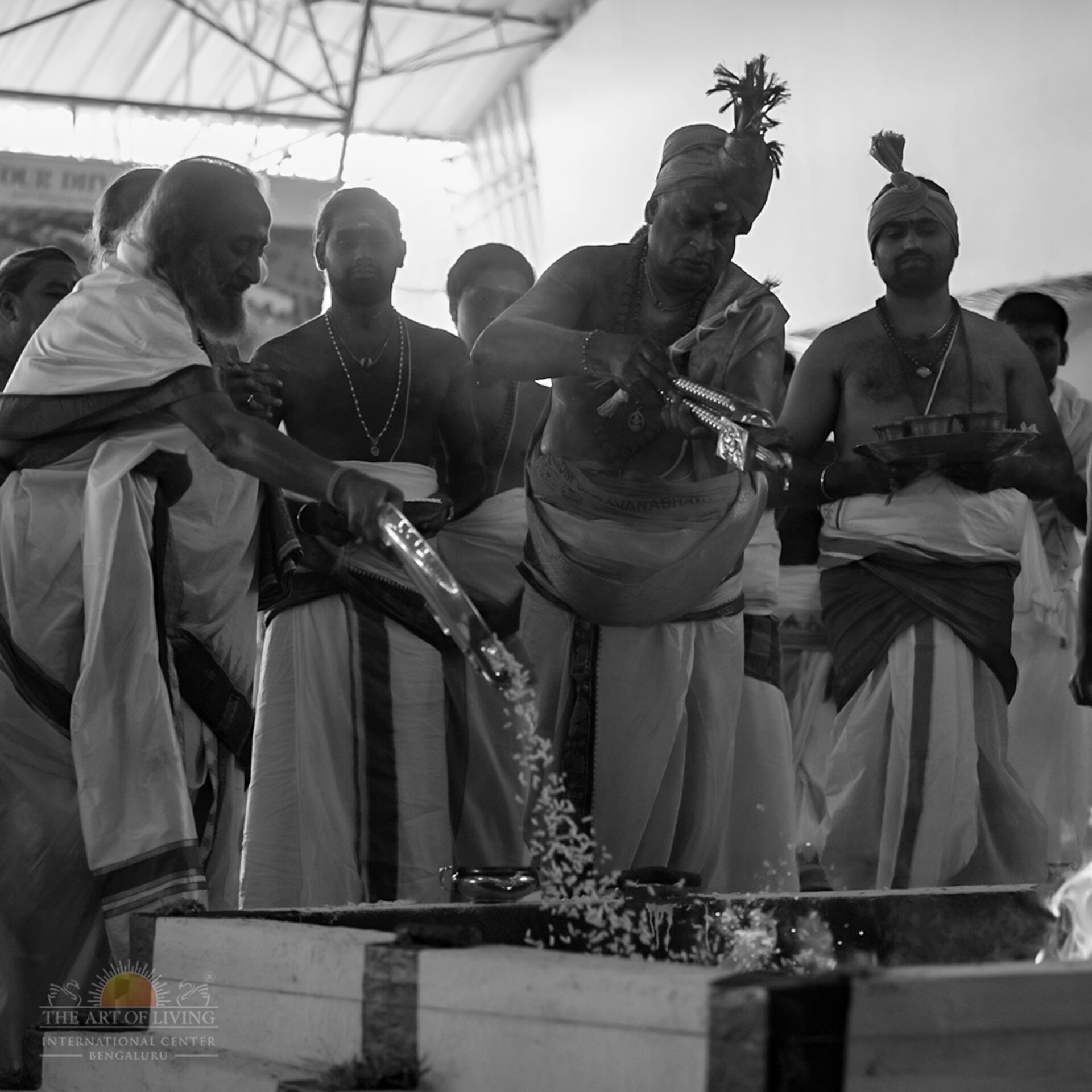After two long years, 1.5 lakh visitors throng The Art of Living International Center for Durga Puja on the 8th day of Navratri Celebrations. The event was celebrated with traditional ceremonies for world peace with meditation, chanting, singing and food.
October 3, 2022
Bengaluru, India
The long awaited Navratri celebrations were met with much fanfare at the decked up Art of Living International Center, after two years. In what was a visually rich and spiritually uplifting experience, more than 1.5 lakh visitors from 82 countries participated in the homas (special fire ceremonies), including the ancient and powerful Chandi Homa organized on Maha Ashtami for peace and well being in the world.
On Ashtami or the eighth day of Navratri, Chandi Homa, the pinnacle of all homas was performed. The atmosphere filled up with the sounds of ancient Vedic chants sung in unison by hundreds of priests, as the aroma of the 108 herbs, fruits and other items being offered in the yagya ceremony wafted through air. The core of the ceremony involves a recitation of the Durga Saptashati or 700 verses in praise of the goddess Durga. With the recitation of each verse, offerings are made in the sacrificial fire invoking the goddess. Chandi Homa is also about recognizing the divinity in every form of life, from cattle to elephants, cows, grass, herbs, children, women, men, among others.
“Chandi simply means very powerful,” says Gurudev Sri Sri Ravi Shankar.
“There is an herb associated with every mantra chanted during Chandi Homa and each mantra has its own power. It creates positive vibrations in the atmosphere.”
Gurudev says that the festival of Navratri celebrates the movement from speech to speechlessness, action to knowledge, from narrow mindedness to broad mindedness.
“Navratri is all about awakening the dormant divine consciousness in each one of us.”
Maha Shashti, the sixth day, started with Ganapati Homa, which is done to remove obstacles and seek wisdom and blessings of Lord Ganesha in every walk of life. On Maha Saptami of the seventh day, Rudra Homa was performed, honoring Lord Shiva. This homa is performed to bring overall health, prosperity and happiness. Here, Lord Shiva is invoked in two kalashas in the form of Uma and Maheshwara, representing the masculine and feminine aspects of divinity.
One of the other key features of Navratri celebrations is the special feast or Prasadam prepared by the Ashram Kitchen, which provides free meals to thousands everyday. The kitchen served a whopping 1.5 lakh meals with 60 tons of rice, 40 tons of atta flour, 20 tons of dal, 40,000 liters of oil, 10 ton salt, 45000 liter milk, 250 tons of vegetables and 10,000 liter curd brought in for the mega feast.

